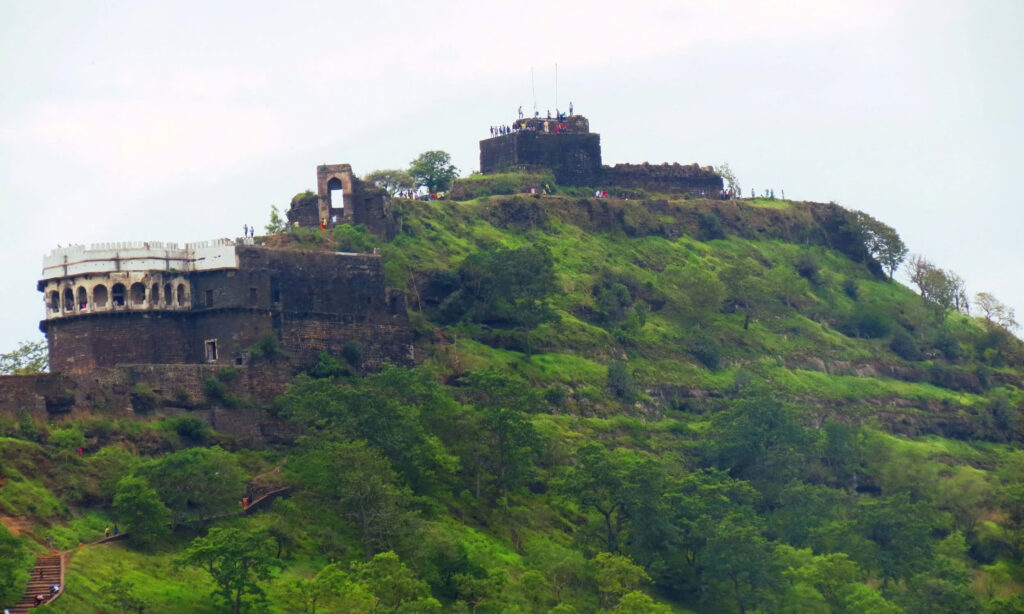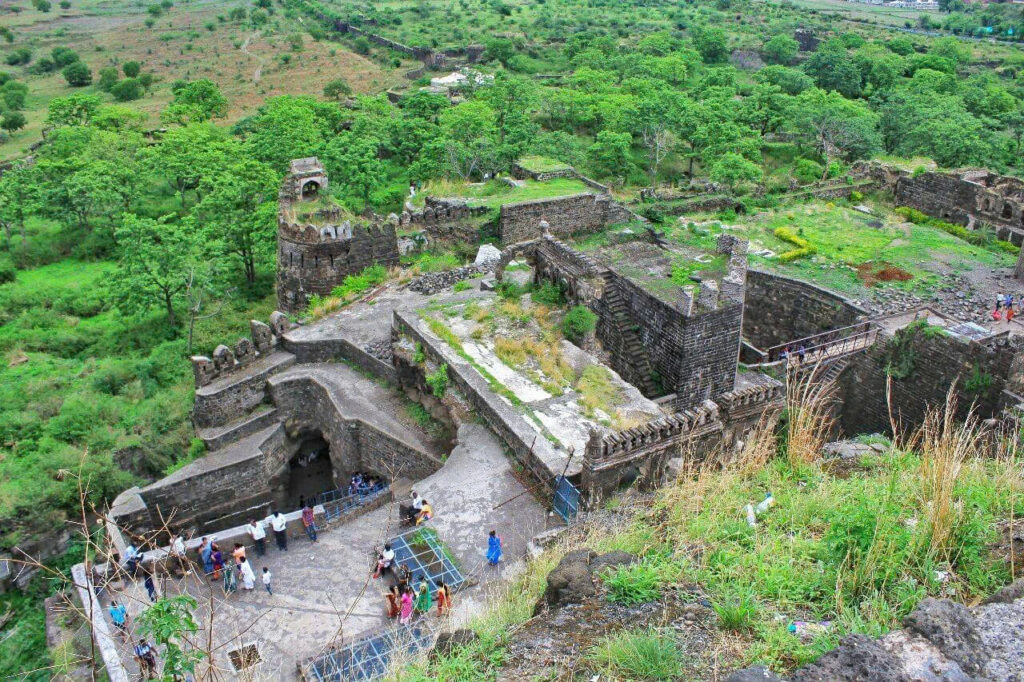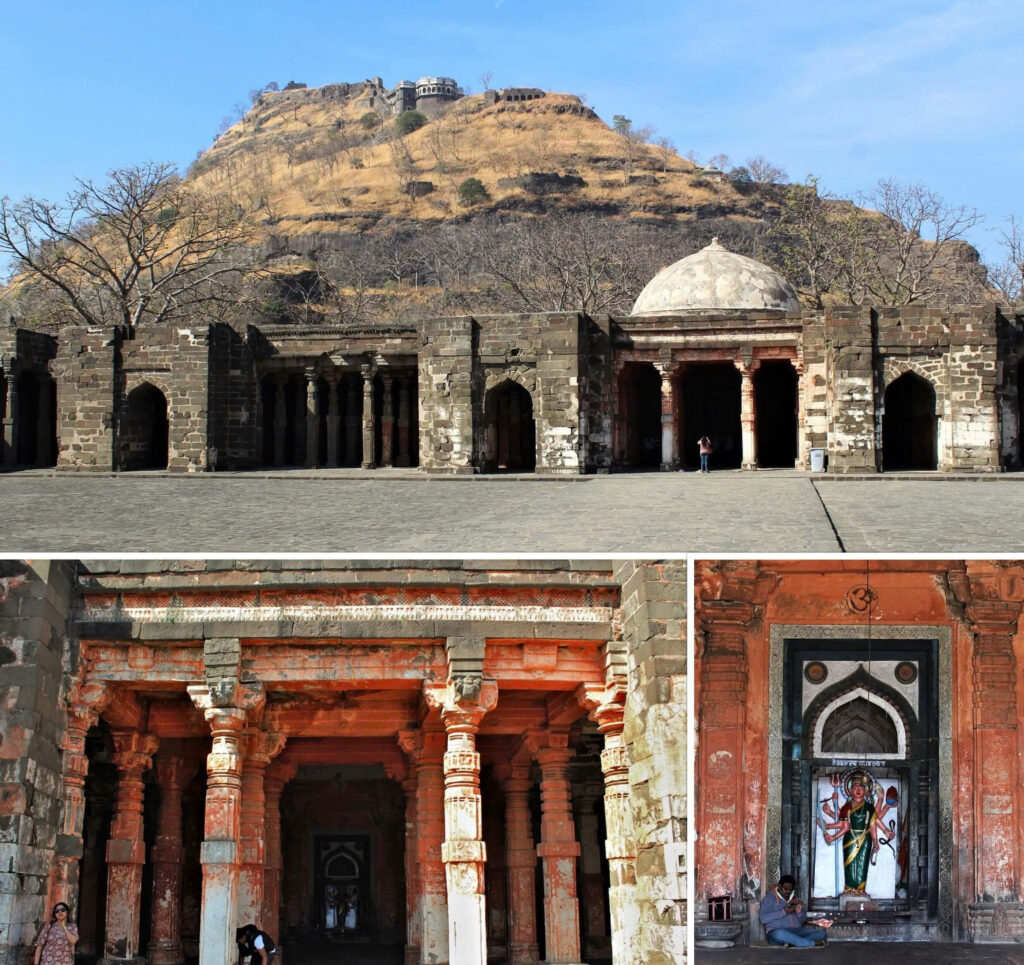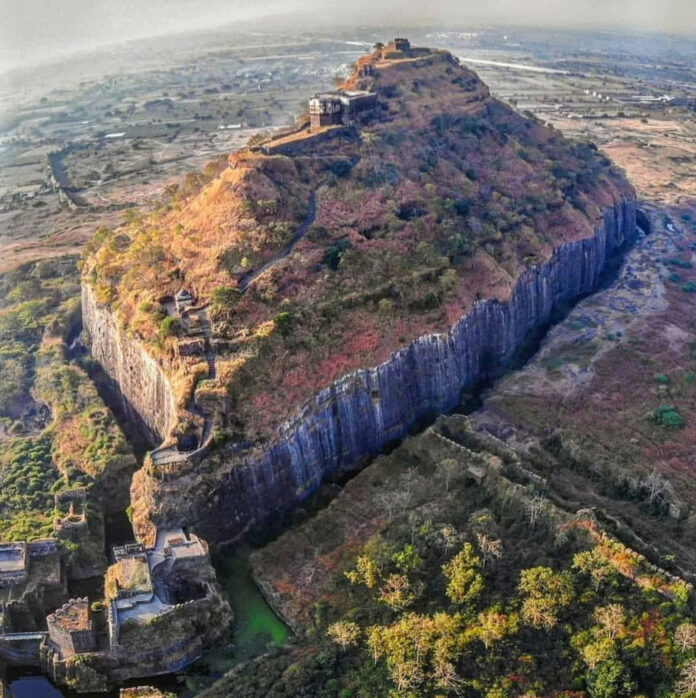Rising from the plains of Maharashtra like a stone sentinel, Daulatabad Fort stands as one of India’s most formidable military marvels. This monolithic fortress, carved from a single massive rock formation, has witnessed centuries of sieges, conquests, and the rise and fall of empires – yet remains largely unconquered by force.
The Mountain of Gods
Originally known as Devagiri, or “Hill of the Gods,” Daulatabad’s story begins in the 12th century with the visionary Yadava dynasty. Recognizing the strategic potential of this lone rocky outcrop, they transformed a natural landmark into an impregnable stronghold. The genius of their design lay in working with nature rather than against it – carving their defenses directly from the living rock to create seamless protection.

The fortress rises an impressive 50 meters from the surrounding plains, with sheer cliff faces forming natural walls that would challenge even the most determined invaders. This commanding position offered defenders an unobstructed view of approaching armies from miles away, allowing ample preparation time for any attack.
A Prize Worth Moving an Empire
The Sultan’s Grand Mistake
Perhaps no story better illustrates Daulatabad’s perceived invincibility than Muhammad bin Tughlaq’s extraordinary decision in 1327. The Delhi Sultan, so impressed by the fortress’s security, ordered his entire capital relocated from Delhi to Daulatabad – forcing thousands of citizens to march nearly 1,500 kilometers southward.
This disastrous experiment in capital relocation ultimately failed, but it forever cemented Daulatabad’s reputation as a fortress worth extraordinary measures. For a ruler to attempt moving an entire empire’s center simply to claim this strategic location speaks volumes about its military significance.
Architectural Brilliance in Stone
Defenses Designed to Bewilder
What truly sets Daulatabad apart is its psychological warfare approach to defense. Rather than relying solely on thick walls and armed guards, the fortress employs a deliberately confusing layout. Invaders who managed to breach the outer walls would find themselves trapped in a maze-like network of winding pathways, false routes, and deadly traps.
The most infamous of these obstacles is the “Andheri” – a pitch-black tunnel carved through the rock mountain core. This disorienting passage forced enemies to navigate in complete darkness while defenders, familiar with every twist and turn, could attack with devastating precision. Concealed pits and dead ends further increased the psychological terror of attempting to capture Daulatabad.
Symbols of Power

Rising 30 meters above the fortress complex stands the Chand Minar, a striking red stone tower constructed during the Bahmani Sultanate period. This elegant minaret served dual purposes – as a practical watchtower offering unparalleled views, and as a powerful symbol of conquest visible for miles around.
A Legacy of Resistance
Throughout its storied history, Daulatabad passed between the hands of numerous dynasties – the Yadavas, Delhi Sultanate, Bahmanis, Mughals, and Marathas all claimed it at various points. Yet remarkably, the fortress rarely fell through direct military assault. Instead, negotiation, betrayal, or starvation typically changed its ownership – testament to the effectiveness of its defenses.
Even the legendary Maratha warrior-king Chhatrapati Shivaji Maharaj, known for capturing seemingly impenetrable forts, found Daulatabad exceptionally challenging. The mighty Mughal emperor Aurangzeb later used it as a key stronghold in his Deccan campaigns, recognizing its crucial strategic value.
Video
Experiencing the Unconquerable
For modern visitors, Daulatabad offers a rare opportunity to physically experience medieval military architecture at its finest. The climb to the summit remains demanding, following the same steep pathways that once challenged invading armies. Navigating the dark passage with only minimal lighting provides a visceral connection to the psychological warfare tactics employed centuries ago.

The reward for this challenging ascent is spectacular – panoramic views across Maharashtra’s countryside reveal why this location was worth fighting for across the centuries. Standing atop the mountain fortress, one can almost hear the echoes of battle cries and royal proclamations that once filled the air.
Planning Your Visit
Daulatabad Fort lies just 16 kilometers from Aurangabad, making it easily accessible as a day trip. The best time to explore this historical marvel is between October and March, when temperatures are moderate enough for comfortable climbing. Be prepared for a physically demanding experience – appropriate footwear, water, and a reasonable level of fitness are recommended.
What makes Daulatabad truly special is how it remains essentially unchanged. While many historical sites have been extensively renovated or reconstructed, this mountain fortress stands much as it did centuries ago – a defiant monument to human ingenuity carved from living stone.
In a world of rapidly changing technology and warfare, Daulatabad Fort reminds us that sometimes the simplest solutions – a mountain transformed by human hands – can create the most enduring legacies.

